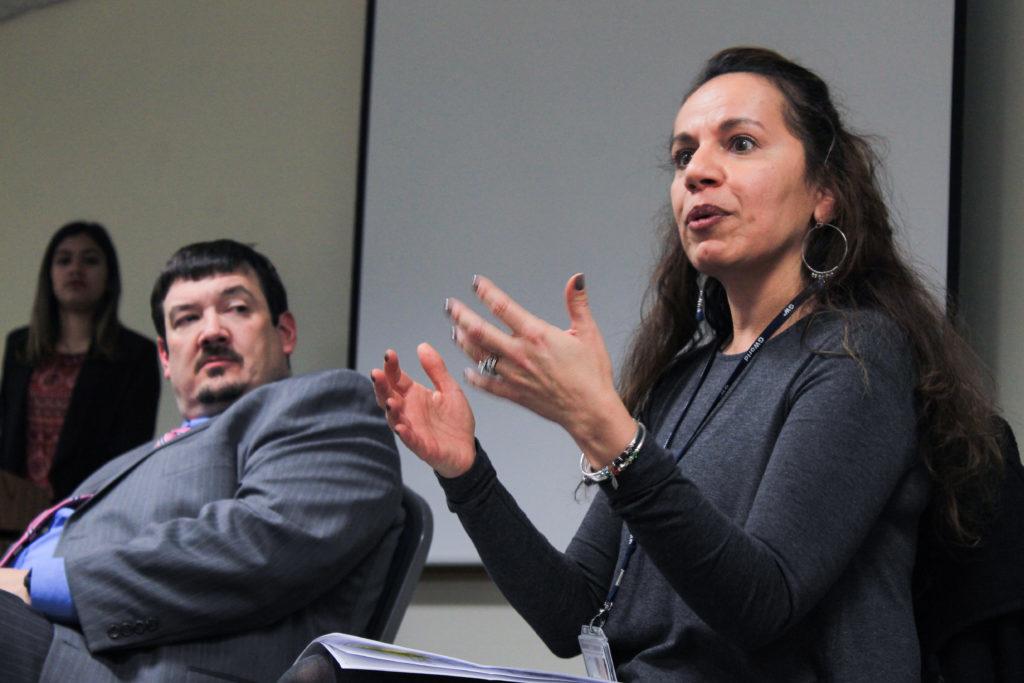University Police Department Chief RaShall Brackney spoke with students in the Marvin Center Tuesday night about the relationships among students of color and UPD officers on campus.
The Organization of Latino American Students hosted the event, titled “Behind the Uniform,” as part of the Multicultural Student Services Center’s Black Heritage Celebration.
Lilianna May and Kiran Mehta, OLAS executive board members, moderated the conversation among a group of 12 students with Brackney and Assistant Chief of Police Michael Glaubach.
The two moderators initiated the conversation by posing the questions about the dynamic of the relationship before giving students and officials a chance to ask their own questions.
Couldn’t make it? Here are some highlights.
1. Officers and students of color
Brackney said in general, officers should use “verbal judo,” or open communication, to de-escalate a situation with a community member, after one student in the audience said a UPD office profiled him when he was moving furniture across campus.
If the officer or a community member directly state their purpose for approaching the person at the start of the interaction, it helps to limit miscommunication, she said.
“We have to be up front about why we are engaging with you first,” she said.
After a student asked about UPD’s position on deporting undocumented students, Brackney said the department is supportive of all people on campus. She added that the department would not work with the FBI or any government agency if they were asked to assist in deporting undocumented students.
“You made it here, and you deserve to be here,” she said.
The University released a statement in December saying that UPD officers would not participate in joint immigration enforcement efforts unless required to by law.
Glaubach said undocumented students should not worry about being singled out or questioned about their status.
“Officers on the street aren’t even going to ask,” he said.
2. Lining up officers with community values
May asked the officials about the pro-police Blue Lives Matter movement that grew in response to the Black Lives Matter movement, with some claiming that Black Lives Matter is disrespectful toward law enforcement.
Brackney said she did not think Black Lives Matter needed a response.
“Blue Lives Matter is a red herring for what the community is really trying to say,” she said.
Brackney said UPD stresses values that ensure that all students are treated fairly. She added that law enforcement leaders need to continue to be selective in choosing officers, saying that not everyone who applies to be an officer should become one.
“We’re moving closer and closer to excellence making sure that our conduct is in line with our values,” she said. “Just as you’re selective in your colleges, we have to be as selective in our profession.”
3. Challenges of leading a department
After a student asked about the challenges of being an officer, Brackney said being a mixed-race female officer can be difficult because she is a minority in most law enforcement agencies.
“How do I navigate a space that is a male dominated profession and not give up who I am?” she said. “It was a challenge to stay true to who I was.”
Brackney said UPD is a very diverse workplace compared to a typical law enforcement office. UPD has officers from different countries and ethnic backgrounds and white male officers are in the minority, unlike most police departments.
Glaubach said the biggest challenge for him has always been pushing back against authority because he said he is an atypical cop, who does not fit the stereotypical mold.
“Law enforcement has not always rewarded asymmetrical thinking,” he said.




